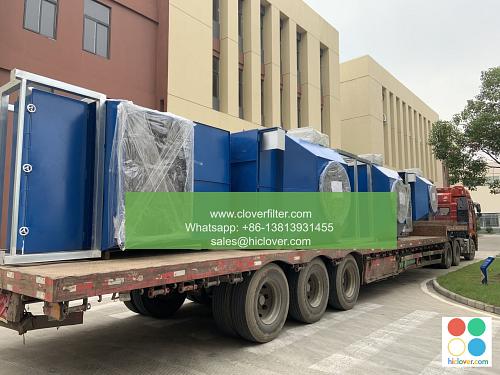The Hidden Cost of Filtering: Understanding the Environmental Toll of Air Purifiers

The Hidden Cost of Filtering: Understanding the Environmental Toll of Air Purifiers
As the global concern for air quality continues to rise, the market for air purifiers has become increasingly popular. While these devices may seem like a simple solution to indoor air pollution, they come with an often-overlooked environmental cost. In this article, we will explore the hidden costs of filtering and the environmental toll of air purifiers.
Understanding the Basics
Air purifiers use filters to capture pollutants, allergens, and particles from the air, releasing clean air back into the environment. However, these filters are made from a variety of materials, including activated carbon, HEPA (High-Efficiency Particulate Air), and other synthetic materials. The production and disposal of these filters pose significant environmental concerns.
The Environmental Toll of Air Purifiers
Material Extraction and Processing
The manufacturing process for air purifier filters requires the extraction of raw materials, which can have a significant environmental impact. For example, the extraction of activated carbon often involves damaging local ecosystems, while the production of HEPA filters requires the use of non-renewable energy sources.
Waste Management
Once air purifiers are replaced with new filters, the old ones are often discarded, contributing to the growing problem of electronic waste. In the United States alone, it is estimated that 4-8 million air purifier filters are disposed of annually, many of which end up in landfills or incinerators.
Resource Consumption
Air purifiers also require a significant amount of energy to operate, which contributes to greenhouse gas emissions and climate change. According to the U.S. Department of Energy, air purifiers can consume up to 10-15% more energy than necessary, further exacerbating the environmental toll.
Mitigating the Environmental Impact
Sustainable Filter Options
To reduce the environmental impact of air purifiers, manufacturers can turn to sustainable filter options, such as:
- Biodegradable filters: Made from natural materials like plant-based polymers or bioplastics, these filters can decompose more easily and produce fewer greenhouse gas emissions.
- Reusable filters: Designing filters that can be cleaned and reused multiple times can significantly reduce waste and minimize material extraction.
- Regenerative filters: Filters that can be regrown or replenished, minimizing the need for new materials, are another promising area of research.
Innovative Technologies
Innovative technologies, such as charged cotton, which can effectively capture pollutants without the need for harsh chemicals or expensive filters, offer a promising alternative to traditional air purifiers.
Conclusion
As the demand for air purifiers continues to grow, it is crucial to consider the environmental toll of filtering. By understanding the material extraction, waste management, and resource consumption associated with air purifiers, we can work towards more sustainable solutions. By incorporating sustainable filter options and innovative technologies, we can reduce the environmental impact of air purifiers and ensure a healthier, more sustainable future for all.
Key Areas of Application:
- Indoor Air Quality: Air purifiers are often used to improve indoor air quality, but their environmental impact is often overlooked.
- Energy Efficiency: Reducing energy consumption is crucial in minimizing the environmental toll of air purifiers.
- Waste Management: Sustainable filter options and responsible disposal practices are essential in reducing waste and minimizing environmental harm.
- Green Building: The use of sustainable air purifiers can contribute to green buildings and sustainable design projects.
- Environmental Policy: Policy changes and regulations can encourage the development and implementation of more sustainable air purifiers and filter options.
By understanding the hidden cost of filtering and the environmental toll of air purifiers, we can work towards a more sustainable solution that prioritizes both indoor air quality and environmental protection.
I’m here to help! What would you like to talk about or ask?

